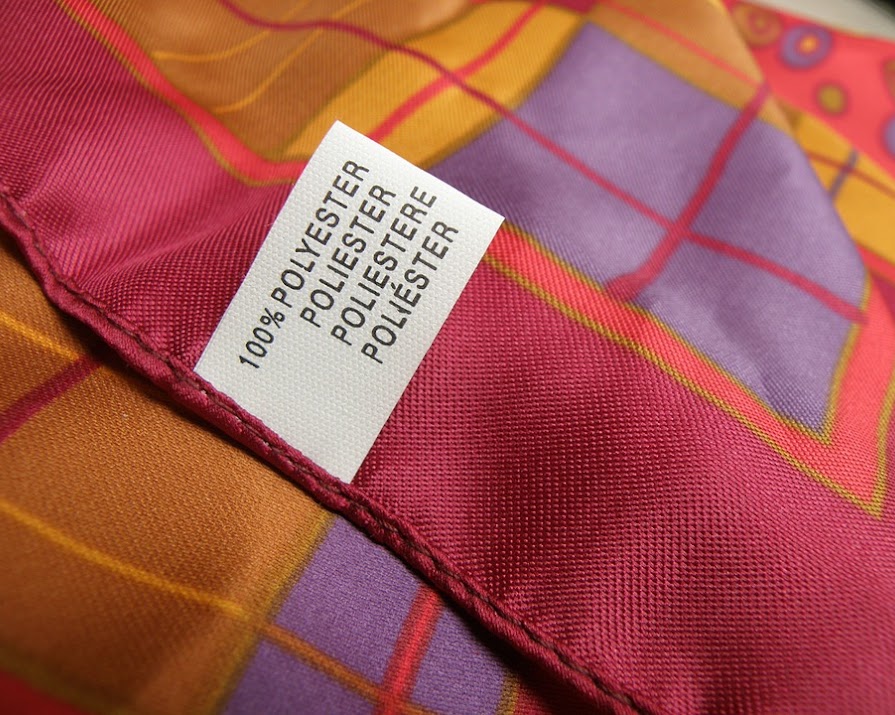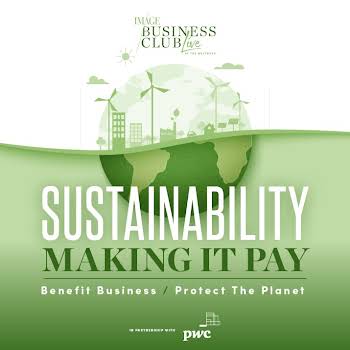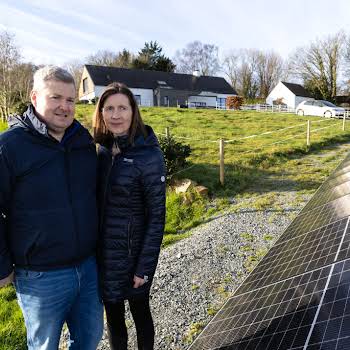Fabrics to avoid and embrace if you want to make more sustainable fashion choices
By Geraldine Carton
25th Mar 2020
25th Mar 2020
When you need to purchase new pieces, make sure the materials as innocent as they look
As modern consumers, we are becoming increasingly aware of the fragility of our planet. Indeed, as our awareness grows, so too does our desire to have the words “sustainable” and “ethical” reflected in our every food and lifestyle choice. And while that’s easy to do when it comes to Keepcups and Meatless Monday, things remain somewhat ambiguous when it comes to fashion — or more specifically, to the fabrics used in the fashion industry.
“Is vegan leather really as good as we think it is?”
“If a fabric is natural, does that automatically make it sustainable (or even ethical)?”
Here, we answer those very questions and list out key concerns associated with some of the most popular fabrics in modern fashion. What’s more, we’ve offered sustainable alternatives worth embracing, too. Give the below article a read and keep these facts in mind the next time you find yourself in need of a bit of retail therapy.
Because one thing’s for sure, conscious consumerism is sooo hot right now.

WHAT TO AVOID
Cotton
As well as being one of the most widely grown crops in the world, conventional cotton is also one of the most chemical-intensive and environmentally harmful when not managed responsibly.
- Cotton is an incredibly thirsty plant – about 1,600 gallons of water are needed to produce enough cotton to make one pair of denim jeans). This puts a huge strain on local water resources with the potential to cause water shortages and jeopardise entire water supplies. Cotton production has been held largely responsible for the complete desertification of the Aral Sea.
- Cotton is a very volatile plant, which means that farmers often use fertilizers and pesticides to ensure their crop grows successfully. When not managed properly, these chemicals leach into the soil and local water systems. This can cause sickness and disease amongst the local populations.
Most of the world’s cotton production is in countries where health and safety regulations are often ignored, and child or forced labour is common practice. In Uzbekistan, for example, more than 1 million people are forced to pick cotton for little or no pay each year.

WHAT TO EMBRACE
Organic cotton
To gain official “organic” accreditation, cotton must be grown using methods and materials that have a low impact on the environment; removing the use of toxic pesticides and fertilisers, reducing water consumption and replenishing soil fertility.
- Many brands are describing their clothes as “organic” without being certified; in some cases, the item itself might only contain a small percentage of organic cotton, or may indeed be made from organic cotton, but was then dyed using toxic chemicals.
- If you want to be sure that a product is truly organic, check the tag for the Global Organic Textile Standard (GOTS) symbol, the Soil Association symbol or the Organic Exchange symbol:

WHAT TO AVOID
Polyester (and other petroleum-based synthetic fabrics)
Polyester, nylon, spandex and acrylic are all synthetic fibres derived from petroleum. They make up about 65% of our clothes and are favoured by manufacturers because they provide a cheap and fast alternative to natural fibres.
- The production of synthetic fibres is energy-intensive and uses large amounts of fossil fuels (each year more than 70 billion barrels of oil are used to make polyester); releasing toxins into the atmosphere that are dangerous for the health of humans and our ecosystem.
- Synthetic, petroleum-based fabrics are strictly non-biodegradable. This means that unless incinerated, every pair of nylon tights or spandex leggings you own will still be on this planet for the next 1000 years.
- Every time we wash a garment made of synthetic material, thousands of plastic fibres are released into the water. These fibres are so small that they pass through wastewater filtration systems and flow into our rivers and oceans (our clothes release half a million tonnes of these microfibres into the ocean annually), which are consumed by fish, and subsequently eaten by us.
WHAT TO EMBRACE
Recycled polyester & recycled nylon
Recycled polyester (or “rPet”) is made by melting down existing plastic (eg. plastic bottles) that would otherwise be sent to landfills or end up in our oceans, and re-spinning it into new polyester fibre.
- Recycled polyester production requires 59% less energy, emits 32% less carbon emissions than virgin polyester production, and reduces our dependency on petroleum as a source of raw materials.
- Five plastic bottles yield enough fibre for one extra large recycled polyester T-shirt.
- NOTE: recycled polyester is still non-biodegradable; it still releases microplastics into water systems, and even though it requires less energy than virgin polyester, rPET production still uses more energy than all natural fibres.
Recycled Nylon has the same benefits as recycled polyester, in that it diverts waste (old fishing nets, tights, carpets, swimwear etc.) from landfills and uses far fewer resources than virgin nylon in its production.
- Look out for recycled nylon being embraced by brands such as Speedo and Patagonia.

WHAT TO AVOID
Conventional leather & plastic vegan leather
From the get-go there is the obvious fact that leather is made from animals, which means that it is not animal-friendly and carries a significant carbon footprint from the get-go. However there is a lot more wrong with the production of leather than just its association with animals. This largely comes down to the chromium used in the production of most leather, which poses significant dangers to both the environment and those who live and work in the local communities
- The dumping of waste by tanneries – both solid (e.g. animal parts) and liquid (chromium and other toxins) – into the surrounding water systems is commonplace in places such as China, India and Bangladesh (where most of the world’s tanneries are located), because environmental protection standards are ignored or simply not in place.
- Most factory workers in these tanneries do not wear adequate protection and suffer from skin/ respiratory diseases and cancers (due to constant exposure to highly carcinogenic chromium), as well as widespread workplace injuries.
- Children have been found working in the tanneries of Bangladesh, and as a result of the harsh working conditions and the toxic chemicals they are exposed to, most do not live beyond the age of 50.
Vegan leather
Vegan leather is usually made of PVC or polyurethane, which are plastic, synthetic fibres that have a similar environmental impact as polyester and nylon. With this in mind, plastic vegan leathers are not seen as an eco-friendly option. Rather, look for sustainable vegan leather, or plant-based substitutes such as pineapple leather.

WHAT TO EMBRACE
Piñatex (pineapple leather)
Piñatex is a fiber that uses fine cellulose fibres extracted from pineapple leaves and is used as a vegan substitute for leather.
- Piñatex production is deemed sustainable because the pineapple leaves it uses are an agricultural by-product (about 40,000 tonnes of this pineapple waste is generated globally each year) that would otherwise be burned or left to rot.
- Piñatex can be used to make anything from clothes and footwear, to handbags and furniture.

WHAT TO AVOID
Cashmere
The main issue with cashmere relates to the over-farming of goats and the impact that this has on the local environment.
- When goats eat grass they don’t just bite into it, they pull the grass out by the roots. This stops the grass from growing back and when carried out at a large scale, this can lead to severe degradation of the land and eventual deforestation.
- The overpopulation and overgrazing of Mongolia’s goat population (Mongolia’s cashmere production grew from 5 million – 20 million between 1990 and 2009), has lead to 90% of the native land now being under serious threat of desertification, which will have disastrous environmental effects for local communities.
- It takes four goats to produce enough wool to make one jumper, thus it’s not hard to see why both the farmers and the land are struggling to keep up with current surging market demands – or at least, to do so sustainably.

WHAT TO EMBRACE
Alpaca Wool
Alpaca fiber comes from Alpaca fleece, bred predominantly in the Peruvian Andes. Alpaca wool is seen to be a more eco-friendly version of the cashmere goat for a number of reasons:
- Whilst four goats are needed to produce just one cashmere jumper in one year, alpacas produce enough wool to make 4-5 jumpers per year.
- Alpacas need very little water and food to survive and when they eat grass they bite it straight instead of pulling it out (thus enabling future grass growth).
- The soft padding under the Alpacas’ feet is also far less destructive to soil than stiletto-esque goat hooves.

Our star fabric:
Linen
Linen is strong, long-lasting, natural, low-maintenance, biodegradable and undeniably gorgeous fabric. Derived from the flax plant, linen is deemed highly sustainable as it requires far less water, pesticides and fertilisers to grow than other natural fibres (i.e. cotton), not to mention its ability to grow in low-quality soil that is unsuitable for food crop production.
As Ireland is known for its beautiful, high quality linen production, we recommend you seek out some of the best that this country has to offer; includingn the produce of GROWN, White & Green and Enrich & Endure.
Read more: The ugly side of fast fashion: This is the scary impact it’s having on our world
Read more: Documentaries to watch if you want to get serious about sustainability
Read more: The impressive, Irish innovators leading the way in sustainable fashion

























